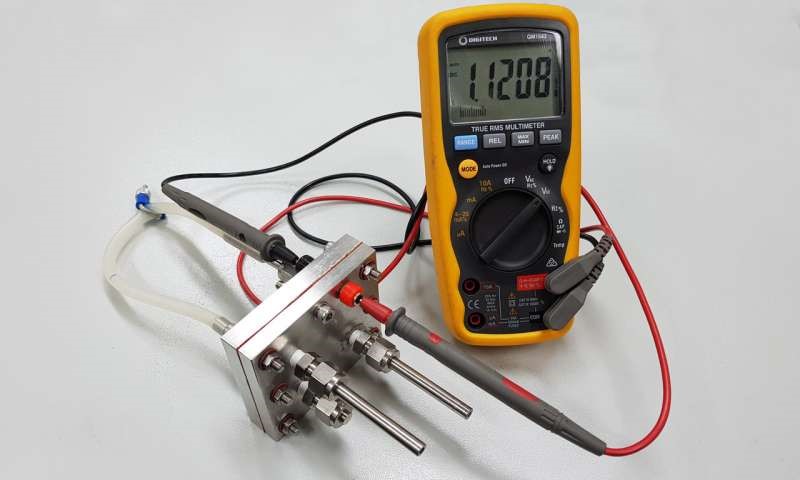
By Brian Santo, contributing writer
Researchers at RMIT University in Australia have what they claim is the world’s first rechargeable proton battery. Theoretically, the new battery has the potential to exceed the storage capacity of increasingly popular lithium-ion (Li-ion) batteries but be more environmentally friendly.
Various research institutes have been exploring proton exchange membrane (PEM) fuel cells for years. RMIT says that its new proton battery is a variant of that technology. Its proton battery uses an electrode for solid-state storage of hydrogen. The electrode is coupled with a reversible fuel cell as a rechargeable unit.
The university has been pursuing its approach for several years. Previous versions incorporated an electrode made of a metal alloy (which RMIT did not identify) that included a rare earth material. That battery was functional, but its rechargeability was insufficient.
The new version, the first fully rechargeable version, replaces the metal alloy electrode with one made of a material that is far more effective, significantly more abundant, and easier to manage: carbon.
Charging the new proton battery relies on splitting water in the fuel cell to produce protons. The protons are conducted through a polymer cell membrane (the polymer used is nafion). Those protons, with the aid of electrons supplied by the applied voltage, bond with the carbon storage material.
RMIT claims that there is no hydrogen gas byproduct. In contrast to other hydrogen storage batteries, RMIT’s version stores hydrogen in atomic form rather than as molecular gaseous hydrogen in an external cylinder, according to the summary of the research paper that describes the device.
“It is, thus, a hybrid between a hydrogen-fuel-cell- and battery-based system, combining advantages of both system types,” wrote the authors.
Applying a current reverses the process. Hydrogen atoms are released from storage and lose an electron to become protons once again. These protons then pass back through the cell membrane, where they combine with oxygen and electrons from the external circuit to reform water.
RMIT claims a design innovation in the use of a small volume of liquid acid within the porous electrode to conduct protons (as hydronium, or H3O) to and from the membrane of the reversible cell.
“Hydrogen gas evolution during charging of the activated carbon electrode was found to be very low until a voltage of around 1.8 V was reached,” said the researchers.
The researchers claim that their proton battery has an energy efficiency that is much higher than conventional hydrogen systems and comparable to that of a Li-ion battery.
The university believes that with five to 10 years’ worth of further development, the proton battery has the potential to be one of the battery types that displaces Li-ion batteries, which are currently being used in consumer devices such as smartphones, increasingly in electric vehicles, and are beginning to be used for energy grid storage, often in combination with photovoltaic generators.
In operation, Li-ion batteries are clean, effective, and lightweight. But taking their entire life cycle into consideration, a greener alternative is becoming increasingly preferable.
Lithium is a rare earth material, and rare earth mining frequently leaves behind a significant amount of toxic waste. The process of mining the copper and aluminum used for Li-ion battery cathodes and anodes is similarly problematic. There don’t seem to be any major complaints with how Li-ion batteries operate, but there are no clear plans for how to recycle them in bulk, especially not in the size and numbers projected for the electric vehicle market. Rare earths are, as clearly stated in the name, rare. It cannot be assumed that there’s enough lithium available to be mined to sustain a market that large, certainly not without raising significant ecological concerns.
RMIT University said that future work on the proton battery is being directed toward increasing current densities during charging and discharging, multiple cycle testing, and gaining an improved understanding of the reactions between hydronium and carbon surfaces.
Image via RMIT University
Advertisement
Learn more about Electronic Products Magazine





